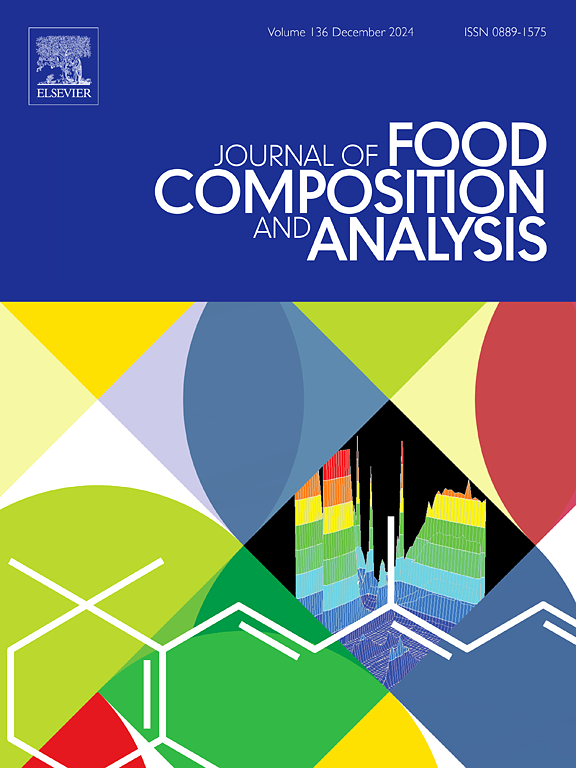Variations in sensorially-relevant metabolites and indices in PDO wines of common ampelographic background: A case study on commercial Lambrusco wines
IF 4
2区 农林科学
Q2 CHEMISTRY, APPLIED
引用次数: 0
Abstract
PDOs are important regulatory tools with the aim to link specific food products to their geographical origin. Despite the widespread presence of PDOs in wine sector, there is limited understanding as to whether wines of the same PDO exhibit common chemical signatures which can be considered representative of the PDO. Improved understanding of these could help in the development of successful PDO policies. In this context, this study considers 40 wines of three different PDOs of Lambrusco (Salamino, Grasparossa and Sorbara), a sparkling red wine produced in Italy, with the aim to evaluate to which extent a chemical signature reflecting sensorially-relevant metabolites could be identified for each PDO, also considering technological variables such as production technique and vintage. In comparison to other Italian wines, Lambrusco PDOs exhibited common features such as high content of acetate esters, trans-3-hexen-1-ol and 1,8-cineole. Lambrusco appellations differed for volatile metabolites such as terpenes, VSCs, C6 alcohols, TDN. Sorbara was characterized by lower content of phenolic compounds. The study of the impact of aging and production techniques revealed a greater impact of the former on the volatile profile. Young Classico methods were more similar to Charmat wines from the same vintages, rather than to older classic methods.
求助全文
约1分钟内获得全文
求助全文
来源期刊

Journal of Food Composition and Analysis
工程技术-食品科技
CiteScore
6.20
自引率
11.60%
发文量
601
审稿时长
53 days
期刊介绍:
The Journal of Food Composition and Analysis publishes manuscripts on scientific aspects of data on the chemical composition of human foods, with particular emphasis on actual data on composition of foods; analytical methods; studies on the manipulation, storage, distribution and use of food composition data; and studies on the statistics, use and distribution of such data and data systems. The Journal''s basis is nutrient composition, with increasing emphasis on bioactive non-nutrient and anti-nutrient components. Papers must provide sufficient description of the food samples, analytical methods, quality control procedures and statistical treatments of the data to permit the end users of the food composition data to evaluate the appropriateness of such data in their projects.
The Journal does not publish papers on: microbiological compounds; sensory quality; aromatics/volatiles in food and wine; essential oils; organoleptic characteristics of food; physical properties; or clinical papers and pharmacology-related papers.
 求助内容:
求助内容: 应助结果提醒方式:
应助结果提醒方式:


